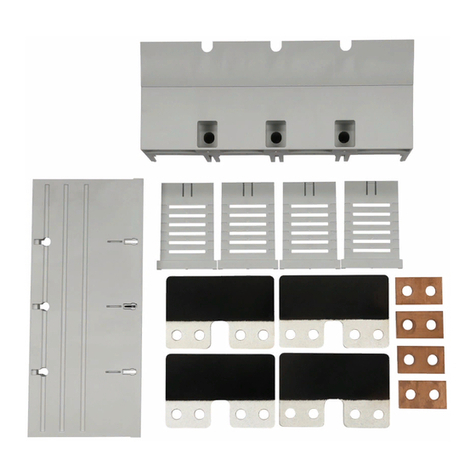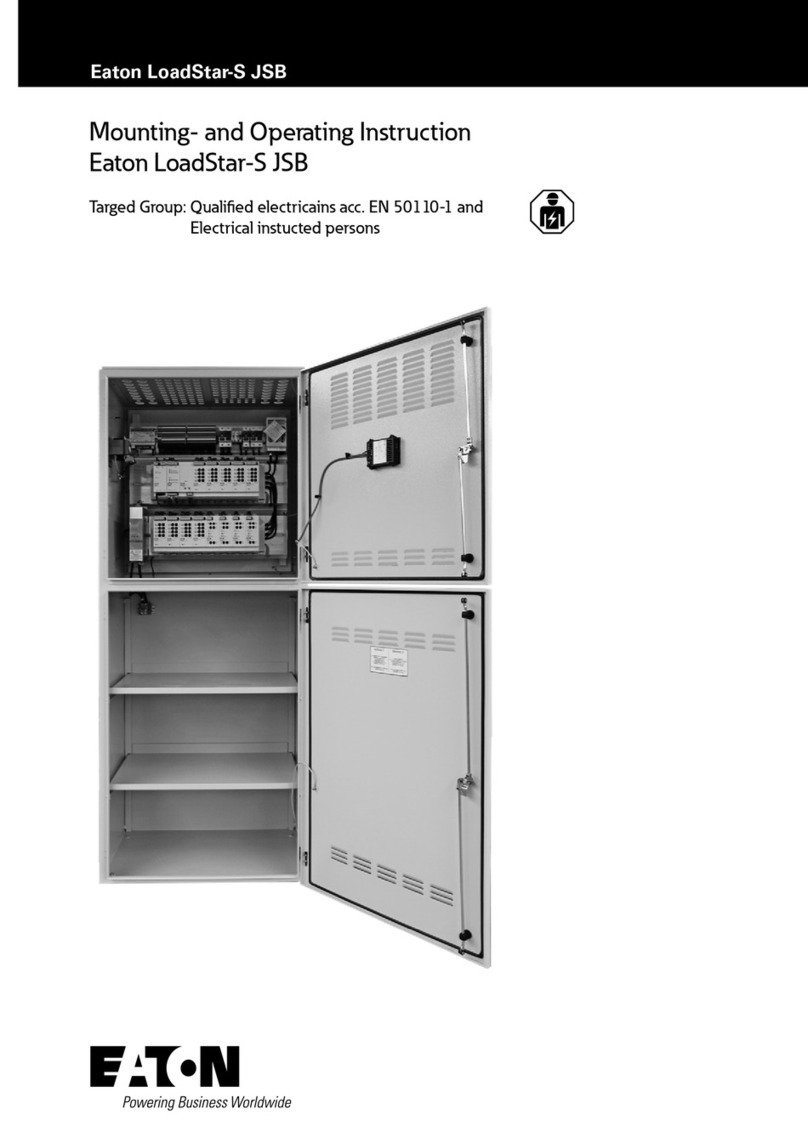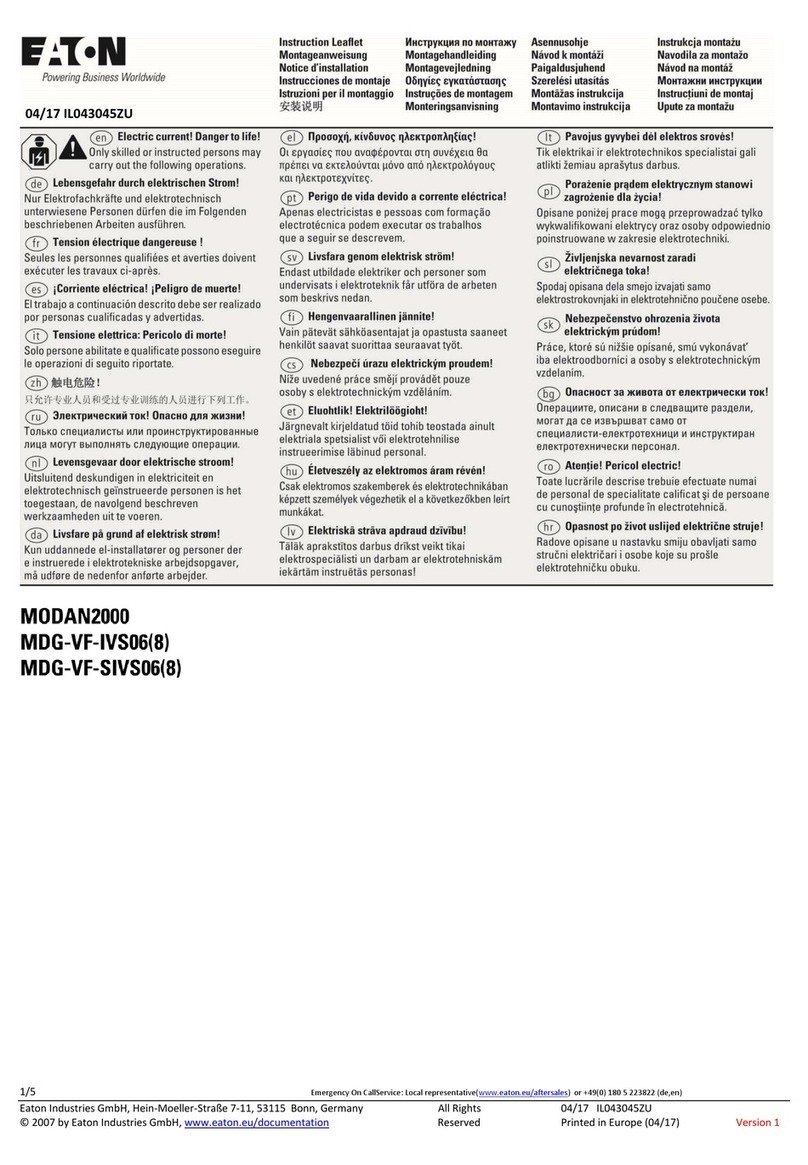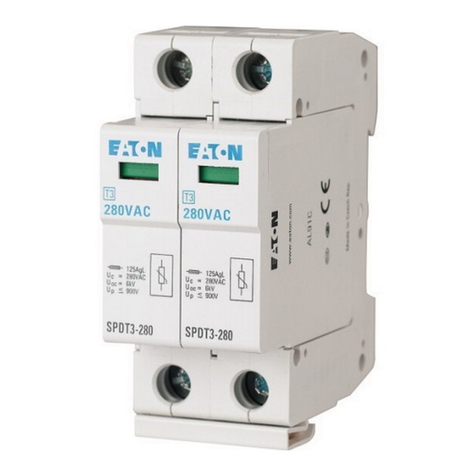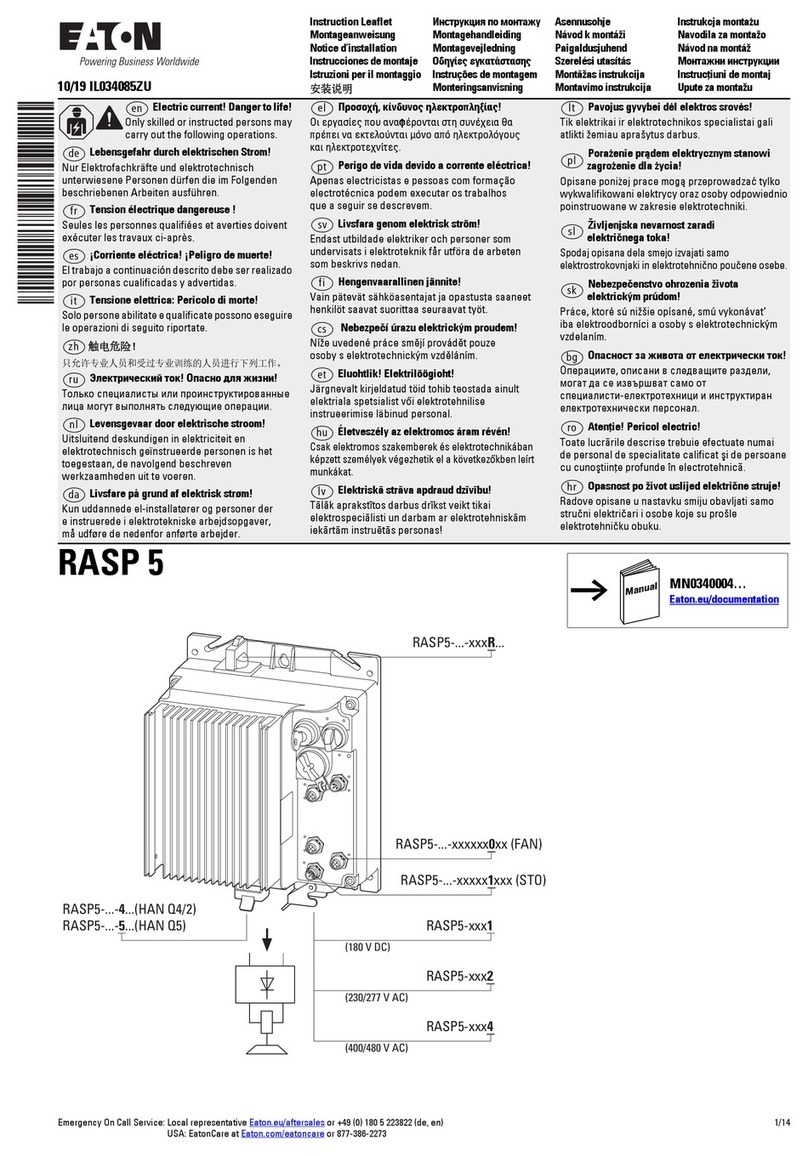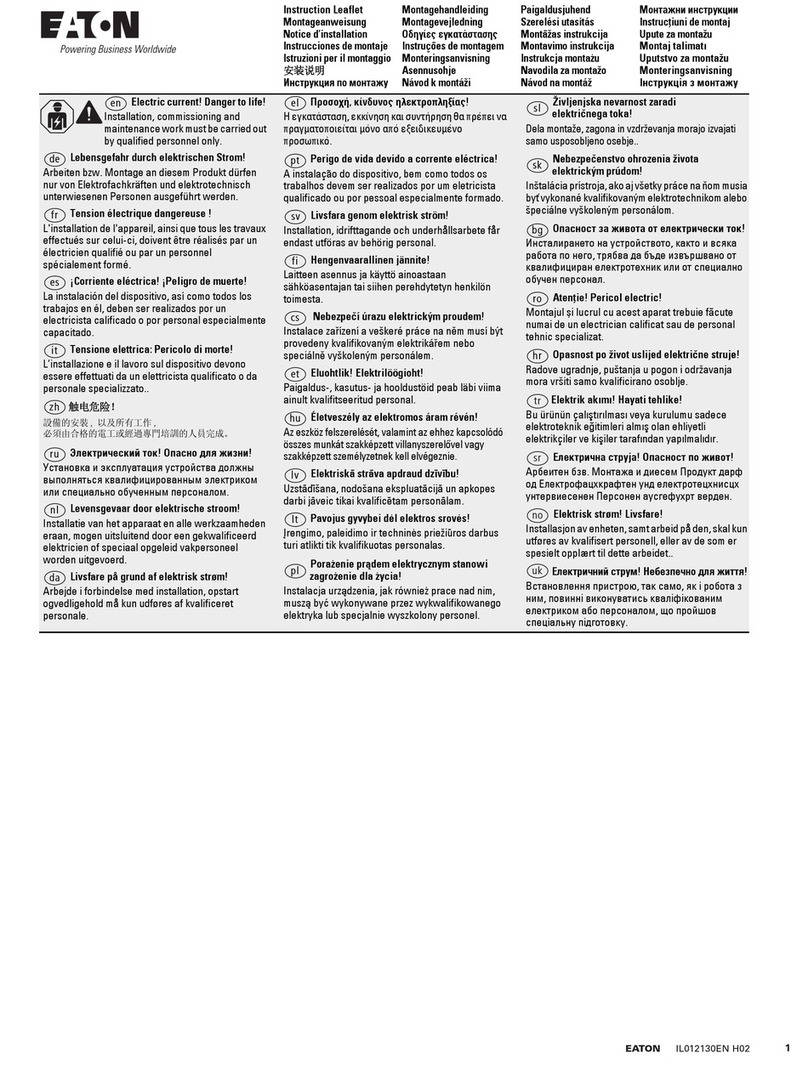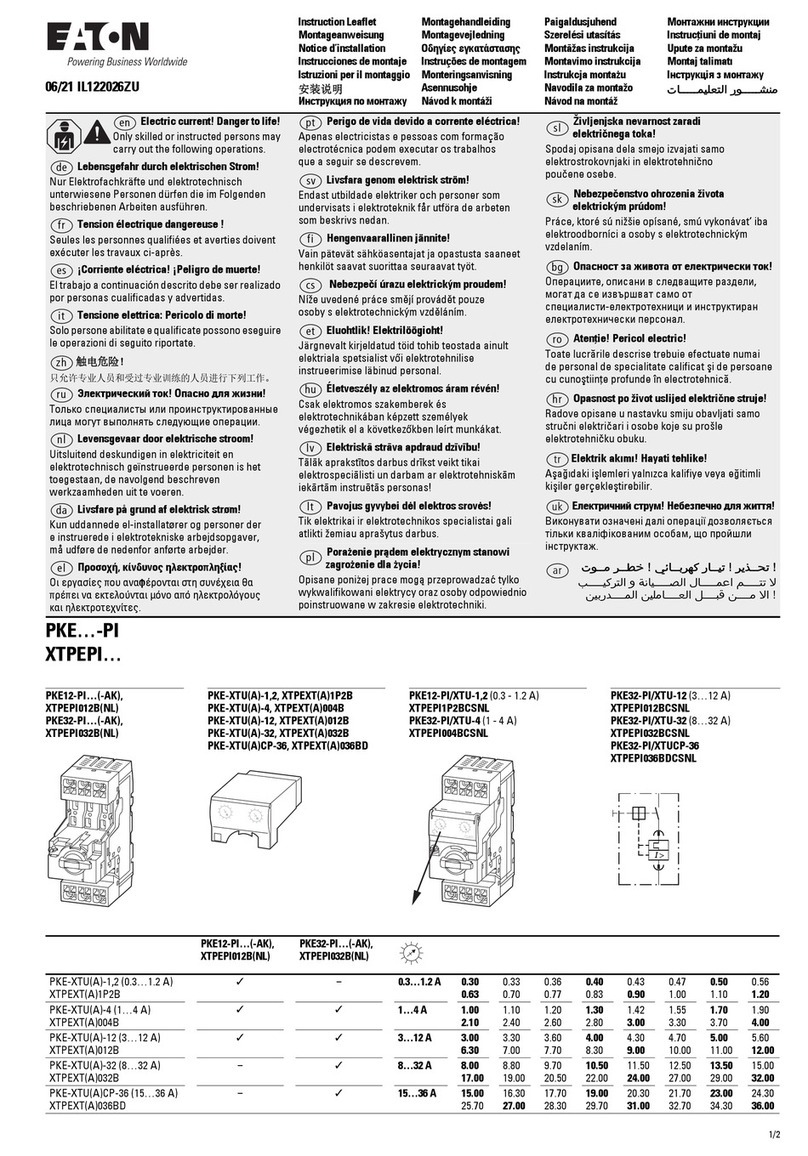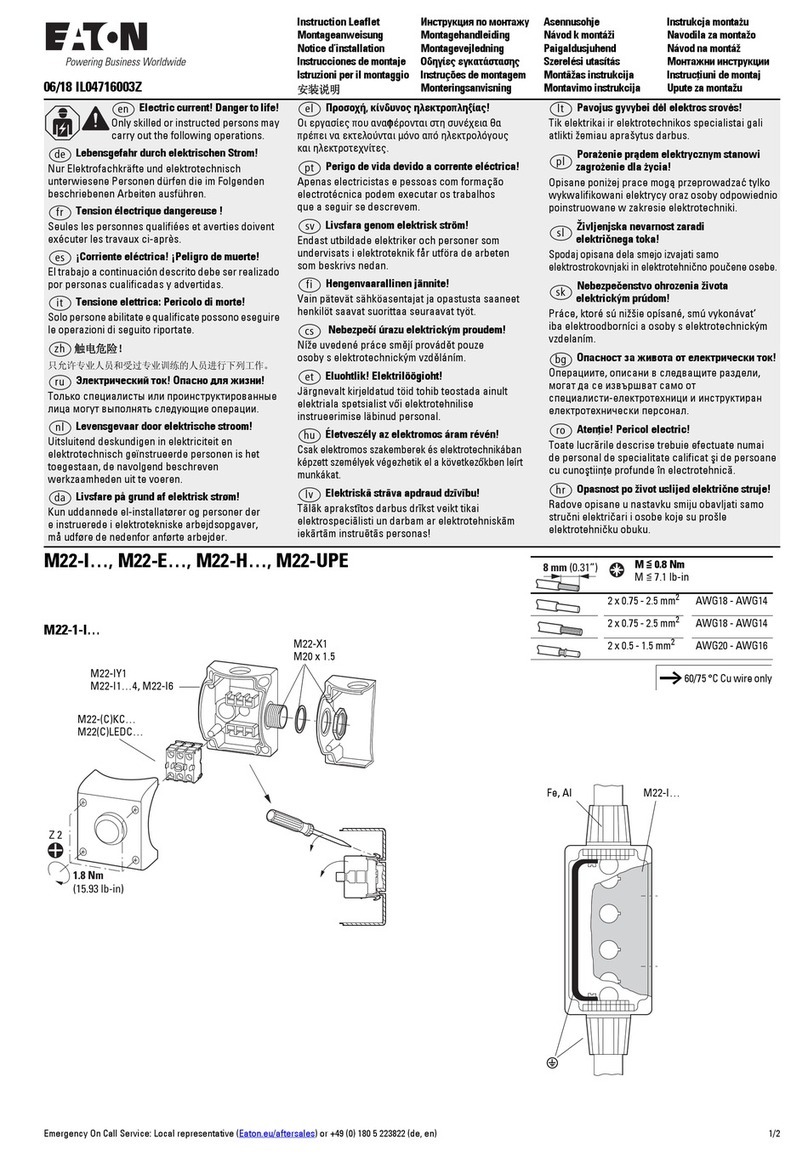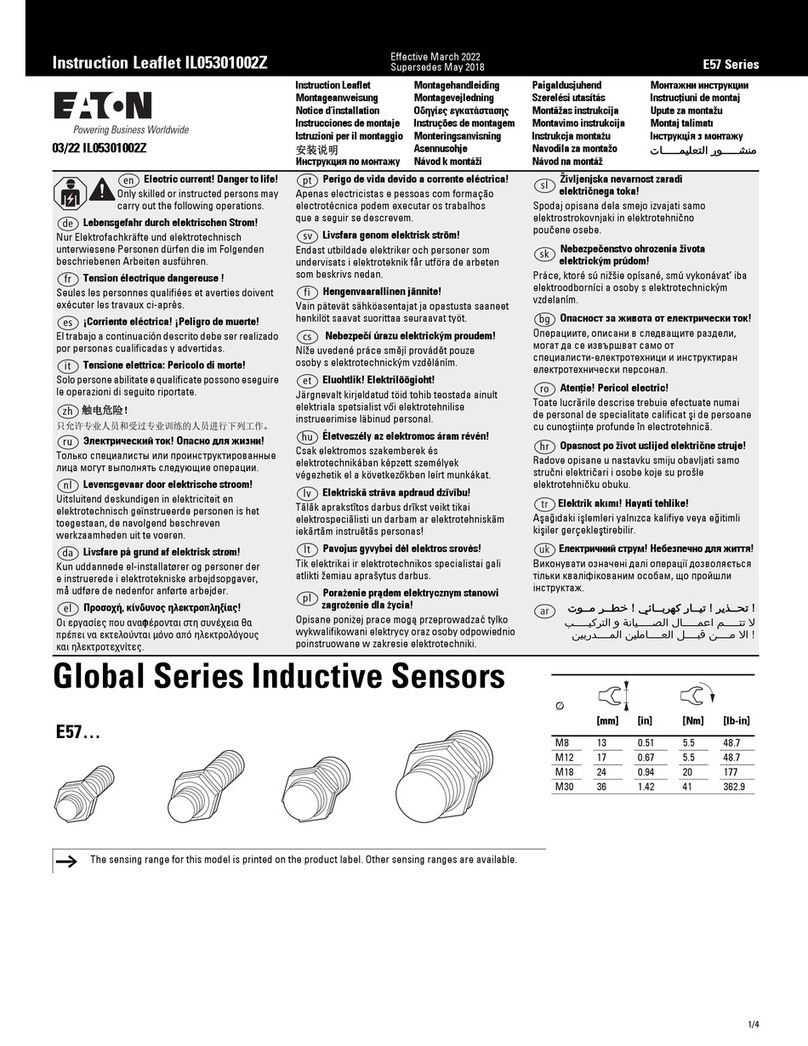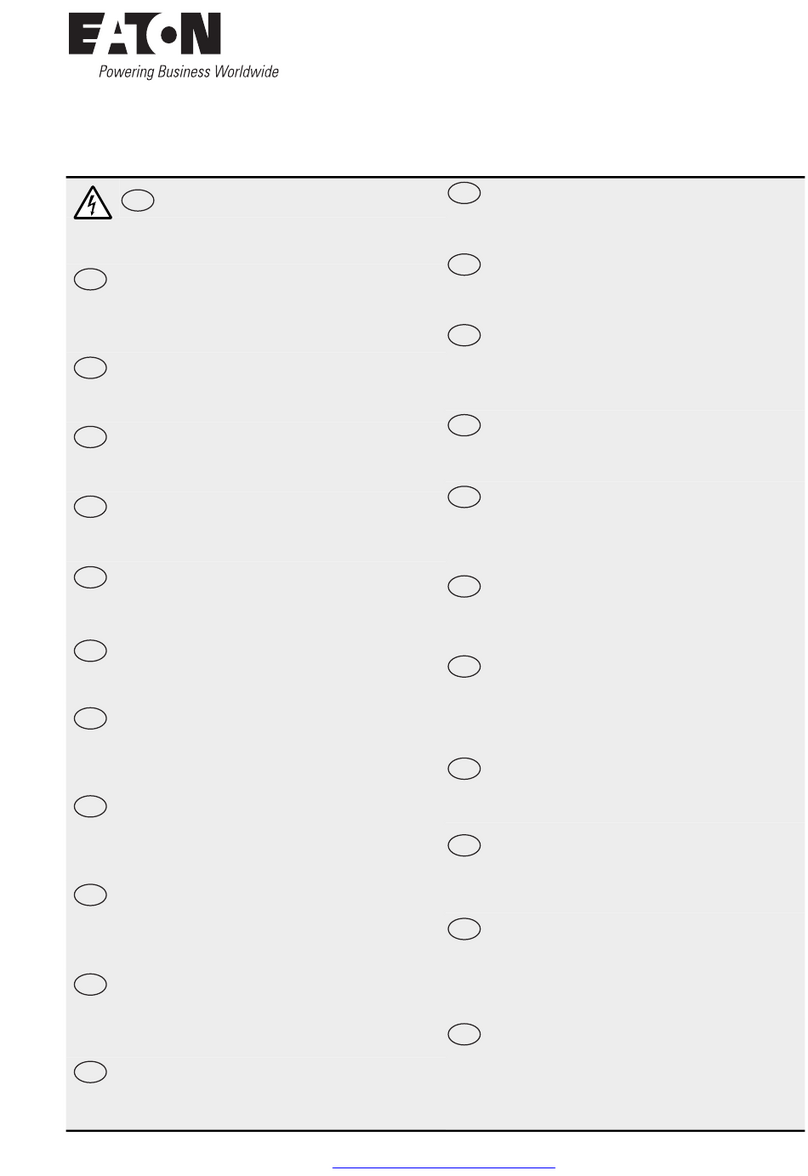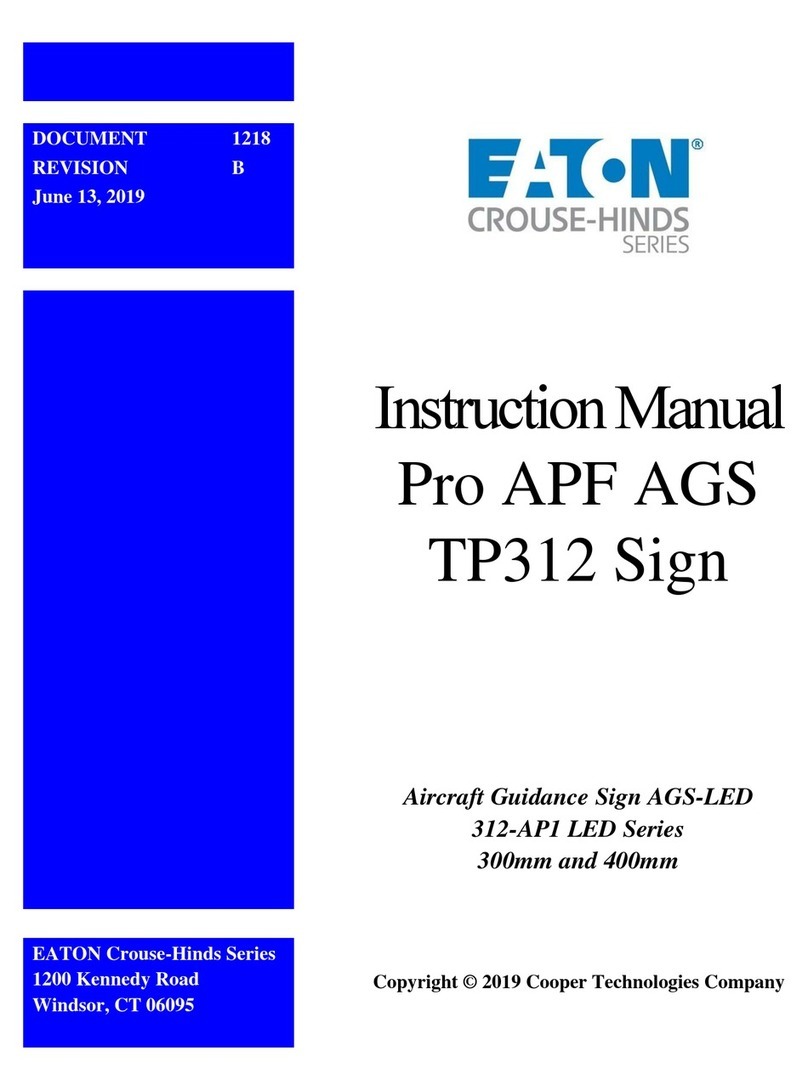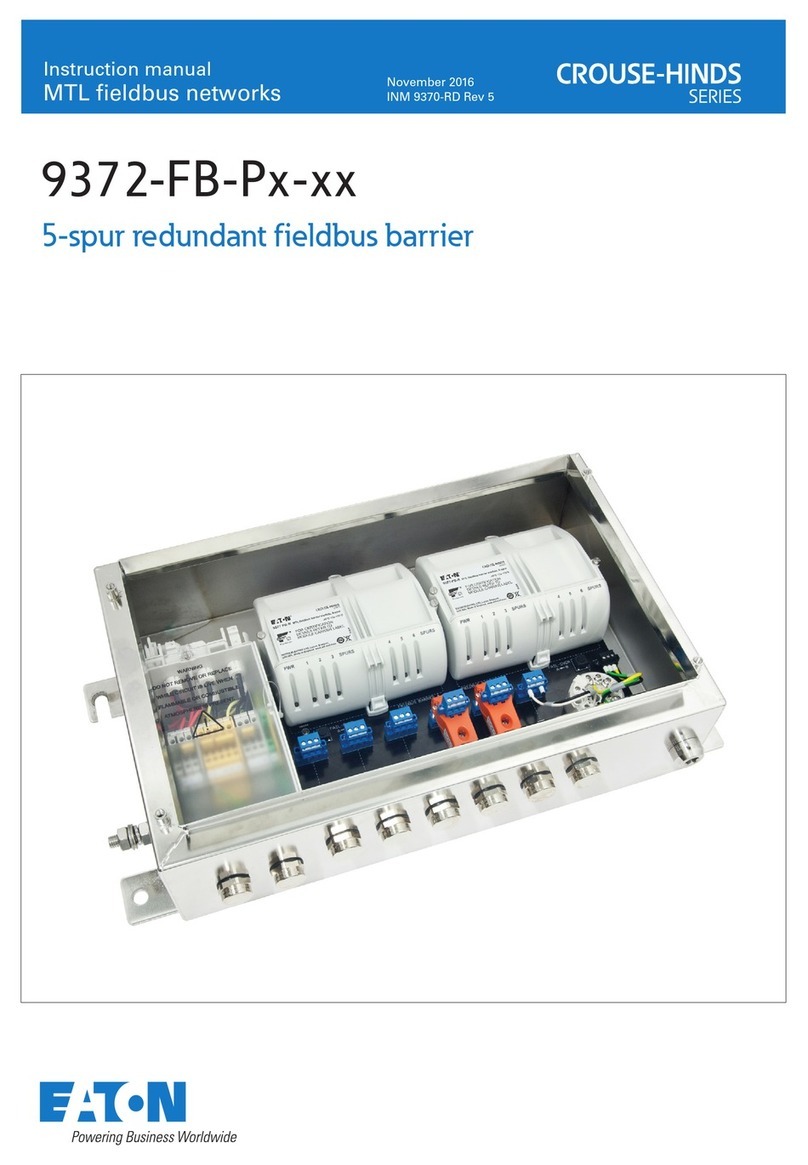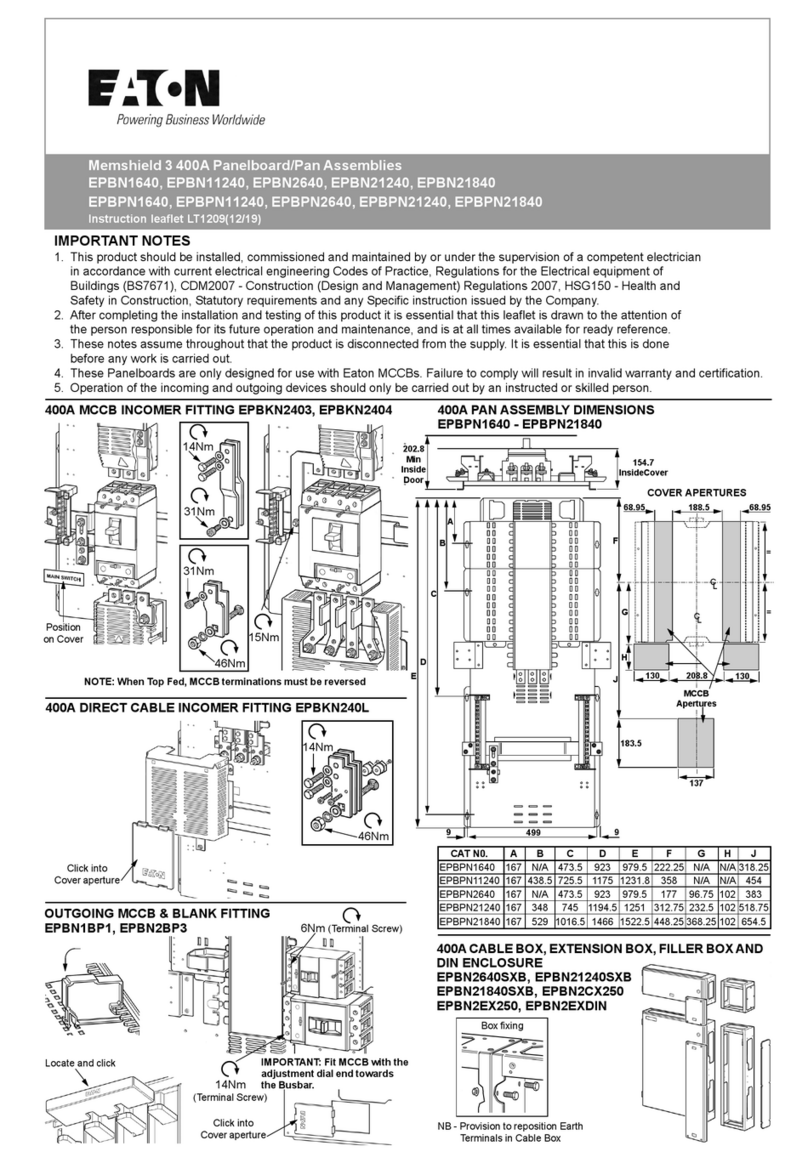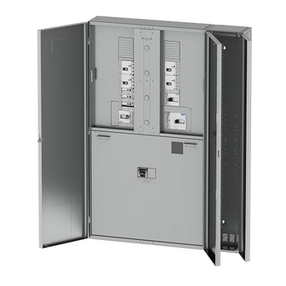
6INSTALLATION AND OPERATION INSTRUCTIONS MN280085EN July 2018
Form 6 triple-single microprocessor-based yard mount recloser control
RIF Comm Failure: This alarm indicates a loss of
communication from the RIF (Recloser Interface) circuit
board to the main CPU circuit board. This alarm resets if
communication is re-established.
CONTROL POWER: The green LED indicates there is
adequate VTC voltage to trip the recloser. This LED does not
indicate the presence of AC power.
CONTROL LOCKOUT: The steady green LED indicates the
control for all three phases is in a locked out state, i.e.
a reclosing sequence is not in progress on any phase In
Single-Phase Trip/Single-Phase Lockout mode the blinking
green LED may indicate that the control for one or two
phases is in a locked-out state, i.e. a reclosing sequence
is not in progress on those one or two phases. This LED
(blinking or steady) does not indicate that any phase is open.
RECLOSER OPEN: The steady green LED indicates all
three phases are in the open position. In Single-Phase
Trip/Single-Phase Lockout and during a sequence in
Single-Phase Trip/Three-Phase Lockout mode the blinking green
LED indicates one or two phases are in the open position.
RECLOSER CLOSED: The steady red LED indicates all three
phases are in the closed position. In Single-Phase Trip/Single-
Phase Lockout and during a sequence in Single-Phase Trip/
Three-Phase Lockout mode the blinking red LED indicates
one or two phases are in the closed position.
ote:N There are several conditions that will cause the
alternate blinking of the CONTROL LOCKOUT,
RECLOSER OPEN, and RECLOSER CLOSED
LEDs: Failure to Trip, Failure to Close, Interrupter
Malfunction, and 52a/b Disagreement.
The LED blinking pattern for these conditions is the
CONTROL LOCKOUT green LED and RECLOSER
CLOSED red LED alternating with the RECLOSER
OPEN green LED. The red ALARM LED will also
be illuminated.
This LED blinking pattern is different than the
continuous blinking of all three LEDs that occurs
when all three reclosers do not have the same
status, i.e. OPEN or CLOSED. To determine the
actual status of each recloser (phase), refer to the
Form 6-TS control front panel RECLOSER STATUS
LCD menu display.
A PHASE FAULT, B PHASE FAULT, C PHASE FAULT: The red
LEDs indicate A, B, and/or C phase current was either the
maximum phase current or within 20% of the maximum
when a trip signal was issued.
GROUND FAULT, SENSITIVE GROUND FAULT: The red LEDs
indicate that a Ground and/or Sensitive Earth Fault tripping
function was asserted at the time the trip signal was asserted.
ALARM: The red LED indicates an alarm has been issued.
Review the alarm status and log on the LCD display for the
specific alarm.
ote:NIf a Battery Alarm occurs, de-select the Pole Mounted
Control checkbox in the ProView application software
Configure>System Configuration dialog box. Refer to
S280-70-9 Form 6-TS Control Programming Guide for
additional information.
ABOVE MINIMUM TRIP: The red LED indicates the current
exceeds the level set for minimum trip.
A PHASE VOLTAGE, B PHASE VOLTAGE, C PHASE VOLTAGE:
Indicates a presence of voltage on the respective phases.
The Single-Phase Undervoltage Pickup setting controls the
voltage indication for the front panel LEDs as defined in
the Voltage setting dialog box for the active setting profile.
Refer to Settings-Voltage in Schemes section of Service
Information S280-70-9 (ProView 4.X.X) or S280-70-23
(ProView 5.X.X) Form 6-TS Control Programming Guide.
FREQUENCY TRIP: Indicates the recloser tripped due to an
under or over frequency condition.
VOLTAGE TRIP: Indicates the recloser tripped due to an
under or over voltage condition.
INDICATOR 1, INDICATOR 2, INDICATOR 3, INDICATOR 4,
INDICATOR 5, INDICATOR 6, INDICATOR 7, INDICATOR 8:
Customizable LEDs that are used with functions programmed
through the Idea Workbench. The LED indicators do not have
active default values. The LEDs are illuminated when the
status configured via the Idea Workbench is present.
Operating panel
The Operating section includes the following sections:
RS-232 configuration data port
The RS-232 connector (shown in Figure2) on the front
operating panel allows direct connection to a personal
computer without any special cables or connectors. This
port is used only for configuring the control with ProView
application software. All settings, metering, events, and
oscillography data are available from this port. The port is
Data Communication Equipment (DCE) wired for direct
connection to a personal computer.
A 9-pin RS-232 cable (Catalog Number KME5-66) to
connect from the PC to the RS-232 data port is available as
an accessory.
HOT LINE TAG ON/OFF toggle switch and
LED indicator
WARNING
Hazardous voltage. Do not use Hot LineTag as a
substitute for a visible disconnect. Always establish a
visible disconnect prior to performing any work requiring
a de-energized line. Failure to comply may cause death,
severe personal injury, or equipment damage. T276.0
Hot Line Tag is provided for live-line work applications. All
closing operations are disabled when the Hot Line Tag
feature is activated.
IMPORTANT
Hot Line Tag activation does not cause the recloser to trip
open. It only prevents the recloser from closing.


